Would you like to learn how to identify a dunnock and what the dunnock eggs look like? We provide this and other interesting information as well as pictures of the dunnock.

The dunnock (Prunella modularis) is a rather inconspicuous songbird. It usually hides in dense vegetation and is perfectly camouflaged there by its inconspicuous appearance. However, when their lovely song comes from hedges or trees, the little bird immediately attracts everyone's attention. The dunnock can also be observed and, above all, heard more and more often in our gardens - it is therefore worth keeping an eye out for the talented singer. You can find out how to clearly identify a dunnock and how you can give the garden bird a home in our large profile.
contents
-
How to recognize the dunnock
- How do dunnock females and males differ?
- How does the dunnock song sound?
- How do you recognize a dunnock fledgling?
- What do dunnock eggs look like?
- Which habitat does the dunnock prefer?
- Where does the dunnock build its nest?
- When is the dunnock breeding season?
- Where do dunnocks spend the winter?
-
Support the dunnock in the garden: Here's how
- What do dunnocks eat?
- Which nesting aids are suitable for dunnocks?
- How can you provide additional support for the dunnock?
How to recognize the dunnock
Dunnocks are medium-sized songbirds with brown and black striped plumage. At first glance, they resemble one house sparrow, but they have a small, narrow beak, in contrast to the typically powerful beaks of sparrows. A clear identification feature of the dunnock is also the blue-grey coloring of the sides of the neck and the throat.
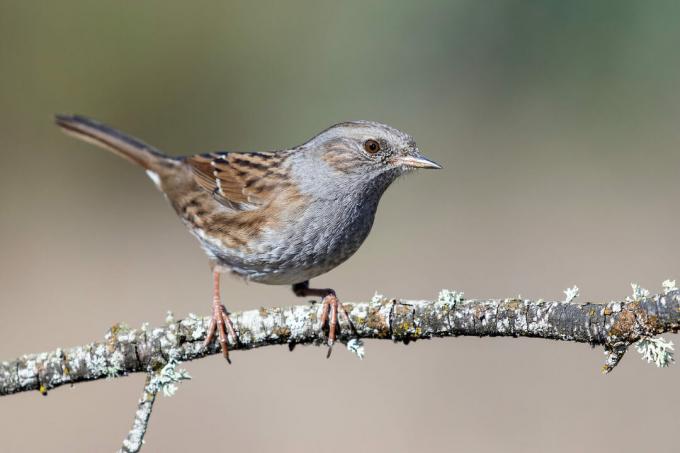
How do dunnock females and males differ?
Male and female dunnocks are very difficult to tell apart. On average, the males have a more pronounced proportion of blue-grey coloring and are therefore a bit more conspicuous than the females. However, this distinguishing feature is very variable and therefore difficult to apply.
How does the dunnock song sound?
The song of the dunnock is high and clear. It consists of a lovely stanza, which is often sung from high vantage points: "Tütellitidü-tütellitidü-tüdellüdi". Since the small birds are so rarely seen, this distinct song is a good identifier.
You can listen to the song of the dunnock here:
Songbird calls are just as bright and clear, but less easy to spot. The dunnock's warning call sounds like a sharp whistle: "Tiih!".
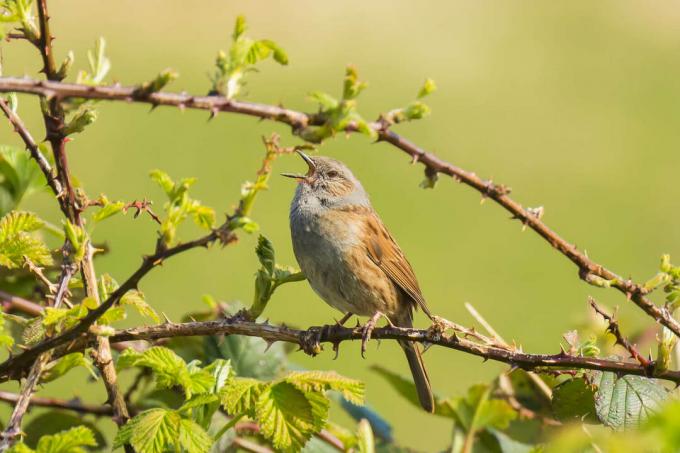
.
How do you recognize a dunnock fledgling?
Young dunnocks still lack the blue-grey coloring of the throat and the sides of the neck, which distinguishes the adult animals. Their entire plumage is heavily striped black and brown. Also, their juvenile beak is distinguished by a bright, orange base.
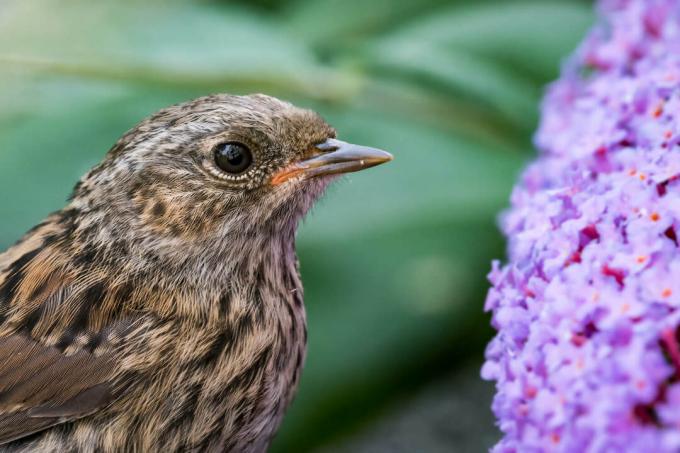
What do dunnock eggs look like?
The eggs of the dunnock are about 1.7 centimeters in size and a brilliant turquoise blue. They are placed in a bowl-shaped nest made of straw, roots and other plant fibers, which is padded with soft materials such as feathers or animal hair.

Which habitat does the dunnock prefer?
Ideally, dunnocks inhabit forests with a lot of undergrowth. Coniferous forests are preferred by the small songbirds, but they also inhabit deciduous and mixed forests. However, since there is only little undergrowth left in our forests, dunnocks are increasingly found in parks, gardens or other green spaces.
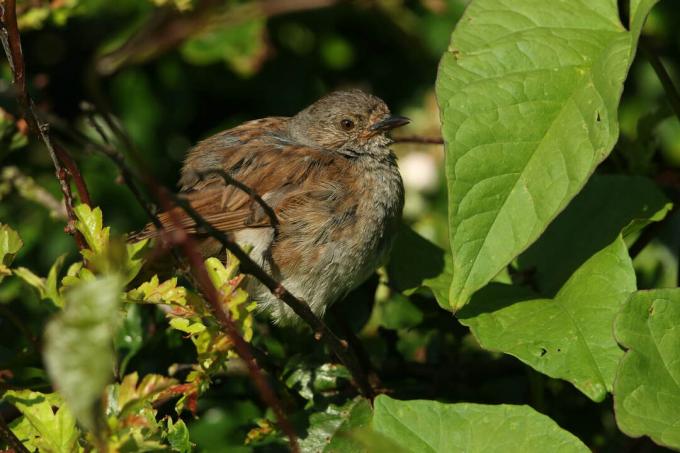
Where does the dunnock build its nest?
Dunnocks build their nests in dense vegetation: in hedges, shrubs or small trees. The nest is well hidden, but attached relatively close to the ground. The nesting sites, which are only a few meters high, therefore often fall victim to nest robbers such as martens, foxes or cats.
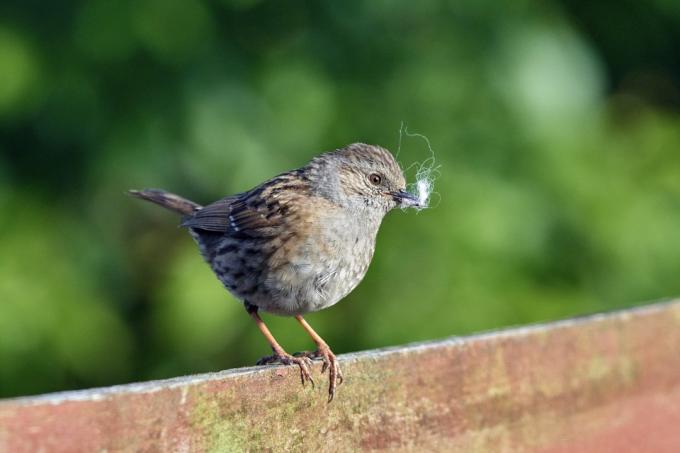
When is the dunnock breeding season?
The dunnock breeding season begins in April. The eggs are incubated - mainly by the female - for about two weeks before the young birds hatch. The little ones are then fed for another 14 days in the nest before they are big enough to start exploring. Since the vegetation is not so dense, especially at the beginning of the year, and the conspicuous eggs are easy for predators to see, the first brood is often lost. Therefore, dunnocks usually have a second or even a third brood.
Where do dunnocks spend the winter?
Dunnocks are partial migrants. This means that not all populations will abandon their winter breeding sites to migrate south. In mild regions, it often happens that the small birds remain in their territories during the cold season. Here, too, dunnocks can occasionally be observed at feeding stations in winter, where they pick up fine seeds. However, most individuals – especially populations from more northern regions – overwinter in southern Europe or northern Africa.
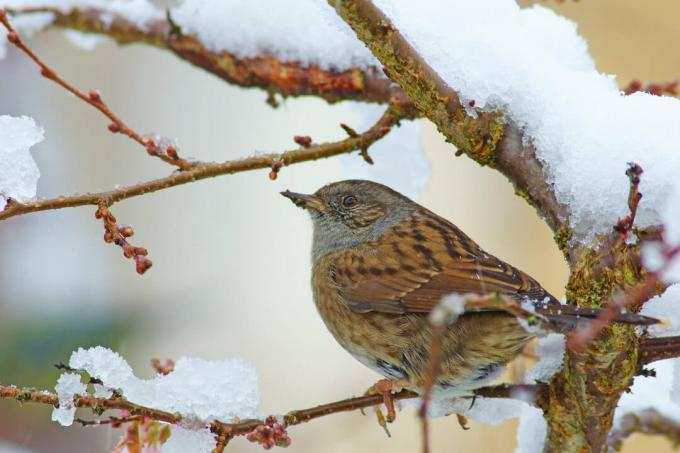
Support the dunnock in the garden: Here's how
Due to the progressive decline in natural habitat, dunnocks have been increasingly found in human proximity for years. The gifted singers can also feel at home in your garden. You can find out here how to create an inviting home for the dunnock.
What do dunnocks eat?
Depending on the season, dunnock have a different diet. In spring and summer they feed mainly on small animals such as insects, spiders, worms or snails. This protein-rich food is particularly important during the rearing of the young birds. In winter, on the other hand, they use fine seeds from perennials and wild herbs.
If you want to offer additional food for the small birds in the cold season, they should not use large grains, but rather a softer food. Our Plantura litter for example, in addition to the classic grains such as sunflower or peanuts, it also contains small, rich seeds, oat flakes and raisins. It therefore provides food for dunnocks and a whole range of other garden birds during the cold winter months.
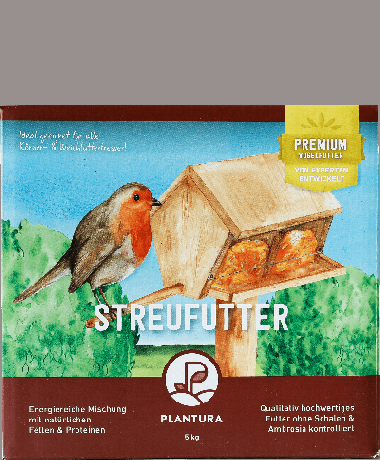
Plantura litter for wild birds
Fat and protein rich litter
for winter feeding of wild birds,
for strengthened & active birds
Native perennials and shrubs, such as thistles, elderberries, stinging nettles or sorrel, which provide the birds with small seeds, are also natural supplements. also local, bird-friendly wild herbs form an important source of nutrition.
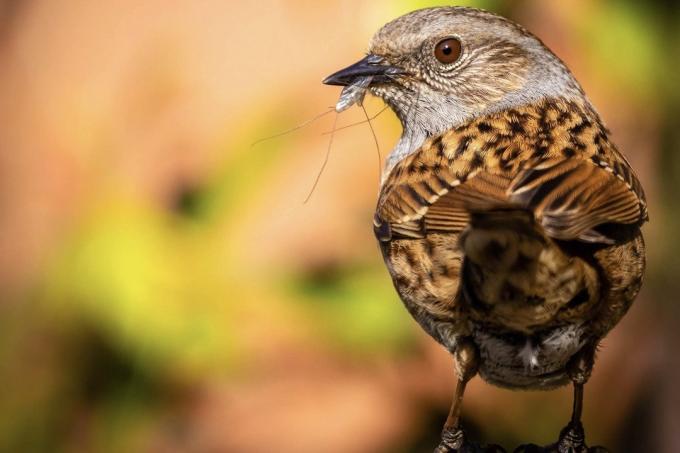
Notice: So that perennials provide a source of food not only in late year, but also over the winter, you should only cut them in the spring. This allows the birds to pick the remaining seeds from the infructescence.
Which nesting aids are suitable for dunnocks?
Since dunnocks do not breed in caves, there are no traditional closed nest boxes for them. The free breeders prefer to build their own nest in the thicket. You can therefore support the birds with dense shrubs and hedges, which should never be thinned out too much. But even a large heap of brushwood can offer shelter and habitat.
Notice: Thorny shrubs, such as native ones, offer an extra portion of protection wild roses. Inside, the birds can nest undisturbed and are safe from nest robbers.
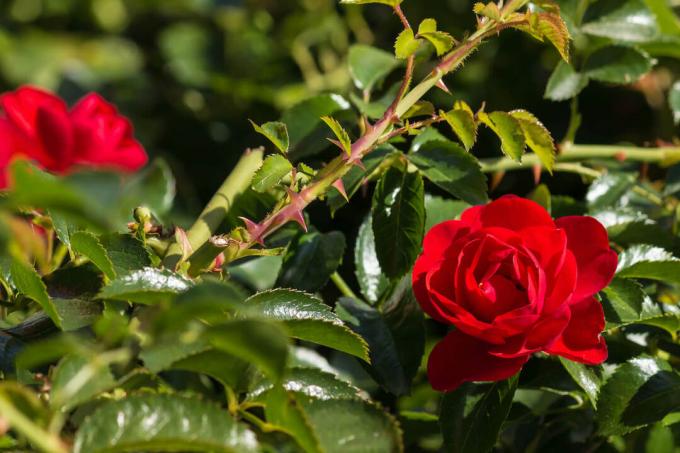
How can you provide additional support for the dunnock?
While supporting birds in your own backyard is a great thing, natural habitat is incredibly important to preserving our bird population. You can help here too: For example, support sustainable and ecological agriculture and forestry, which encourages structural elements, provides a home for birds and other animal species and is free of harmful pesticides gets by.
In the meantime, there's still more you can do for the birds in your own backyard. measures for one insect friendly garden not only bring pollinators and other small beneficial insects into your garden, but also ensure a richly laid table for numerous garden birds. You can also offer a watering hole for birds. This is gratefully accepted, especially on hot days. But be careful: At high temperatures, water shells can also quickly develop into breeding grounds for infectious diseases. You should therefore clean your water point regularly and ideally daily during particularly hot periods.
About the design of a bird friendly garden Incidentally, numerous other bird species are also happy. Like the dunnock, for example, the black redstart or the wagtail dependent on a rich supply of insects.
...and receive concentrated plant knowledge and inspiration directly in your e-mail inbox every Sunday!
